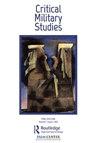War and the child’s gaze in revolutionary and Napoleonic literature and culture
Q1 Arts and Humanities
引用次数: 0
Abstract
ABSTRACT This article considers how the child’s gaze in Napoleonic culture functions as a multifaceted tool in the moral and political history of the Napoleonic Wars. Drawing from Stahl’s framework of the ‘weaponized gaze’ and, at points, multimodal discourse, I track how the youthful gaze has become an emblem of power and ethics in art and literature of the period. In the first two sections of the article, I explore how this gaze has been mediated and manipulated by adult narratives, used for a variety of purposes ranging from personal introspection to political broadcast. The first section considers the gaze within the context of children within war art, and the second moves to literature, forming new critical readings of Victor Hugo’s Les Miserables and Leo Tolstoy’s War and Peace in relation to the history of childhood. The final section of the article attempts to reclaim the child’s gaze through self-awareness and internalization, introducing examples of child authors of the Napoleonic period – Felicia Hemans (Browne), Marjory Fleming, Elizabeth Barrett Browning, and the Brontës – and considering how their writings, varying from patriotism to protest, imitation to epiphanic moments, create a parallel military history, useful for readers and critics of childhood, war and emotion in that they challenge our understandings of children’s agency and involvement. Overall, this article offers new ways of approaching children’s participation in war, demonstrating how their roles as muses, consumers and producers are intimately bound with the moral and emotional fallout of conflict.革命和拿破仑文学和文化中的战争和儿童的目光
本文探讨了拿破仑文化中儿童的凝视如何在拿破仑战争的道德和政治史中作为一个多方面的工具发挥作用。从斯塔尔的“武器化凝视”框架和多模态话语中,我追踪了年轻的凝视是如何成为这一时期艺术和文学中权力和伦理的象征的。在本文的前两节中,我探讨了这种凝视是如何被成人叙事所调解和操纵的,从个人内省到政治广播,这些叙事被用于各种目的。第一部分考虑了战争艺术中儿童背景下的凝视,第二部分转向文学,形成了维克多·雨果的《悲惨世界》和列夫·托尔斯泰的《战争与和平》与童年历史的新批判性解读。文章的最后一部分试图通过自我意识和内化来重新获得儿童的关注,介绍了拿破仑时期儿童作家的例子——费利西亚·赫曼斯(布朗)、马乔里·弗莱明、伊丽莎白·巴雷特·布朗宁和Brontës——并考虑了他们的作品如何从爱国主义到抗议,从模仿到顿悟时刻,创造了一个平行的军事历史,对读者和童年评论家有用。战争和情感挑战了我们对儿童的能动性和参与性的理解。总的来说,这篇文章为儿童参与战争提供了新的途径,展示了他们作为缪斯、消费者和生产者的角色是如何与冲突的道德和情感后果密切相关的。
本文章由计算机程序翻译,如有差异,请以英文原文为准。
求助全文
约1分钟内获得全文
求助全文
来源期刊

Critical Military Studies
Arts and Humanities-History
CiteScore
1.90
自引率
0.00%
发文量
20
期刊介绍:
Critical Military Studies provides a rigorous, innovative platform for interdisciplinary debate on the operation of military power. It encourages the interrogation and destabilization of often taken-for-granted categories related to the military, militarism and militarization. It especially welcomes original thinking on contradictions and tensions central to the ways in which military institutions and military power work, how such tensions are reproduced within different societies and geopolitical arenas, and within and beyond academic discourse. Contributions on experiences of militarization among groups and individuals, and in hitherto underexplored, perhaps even seemingly ‘non-military’ settings are also encouraged. All submitted manuscripts are subject to initial appraisal by the Editor, and, if found suitable for further consideration, to double-blind peer review by independent, anonymous expert referees. The Journal also includes a non-peer reviewed section, Encounters, showcasing multidisciplinary forms of critique such as film and photography, and engaging with policy debates and activism.
 求助内容:
求助内容: 应助结果提醒方式:
应助结果提醒方式:


